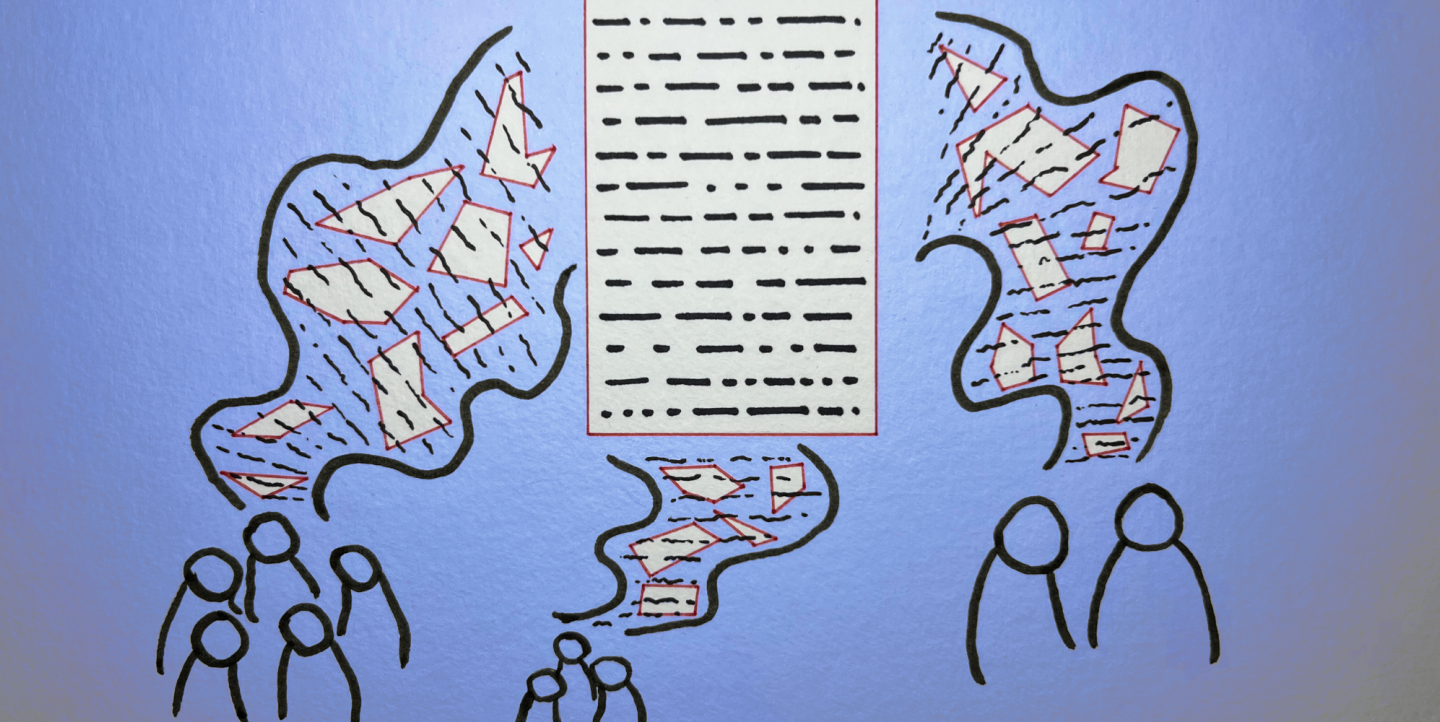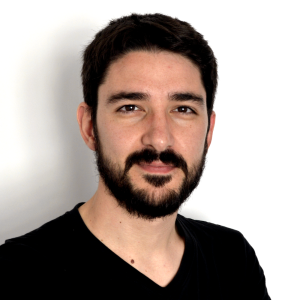Hi, my name is Mattia Peretti and I’m a 2024 ICFJ Knight Fellow. I became a fellow to explore how generative AI can be used by news organizations to better serve their communities, and I’ve spent the last four weeks talking with many smart people in the industry to make sense of this problem statement and figure out what to build from it.
I learned many things, but two above all else. First, my problem statement is flawed and needs to be flipped on its head: “how AI can be used” is the wrong framing. Second, we’ve reached a tipping point in journalism and the consensus is growing: we can’t make our industry more sustainable without radical new solutions and creating products that users actually want. The role AI might play in creating them is somewhat irrelevant.
I’ve decided to dedicate my fellowship to laying the foundations for the creation of something new: a community of people who believe that AI can help us build a sustainable future for journalism, but only if we focus first on what we want that future to look like. Only then should we assess if and how AI can – or cannot – help us build it.
Here’s what I’m thinking and how you can be a part of this.
We are exploring generative AI, but the audience is largely missing from the conversation
I’ve been immersed in the topic of AI in journalism for five years, but only recently have I come to an important conclusion: we are getting this AI thing all wrong. Ok, mostly wrong.
An industry that has perceived itself to be “in crisis” for at least 15 years (I’m not making the number up: a quick search got me to an article from 2009 talking about the journalism crisis, and there are likely to be older mentions), and that is aware of having botched already the transition to digital, has now jumped on the AI bandwagon because “we got it wrong last time but we won’t make the same mistake again!”
And yet we are. We may not be making the same mistake but we are definitely getting it wrong again. We are chasing Silicon Valley’s tail by scrambling to come up with use cases for every new cool product they release (Sora!! Wow, so cool!), without a coherent strategy for how we want AI’s potential to be used in service of our vision for a sustainable journalism that adds value to people’s lives.
People much smarter than me are starting to think that journalism as we know it can’t be saved. I agree. But I’m a hopeless optimist so I also think we can reinvent it. It just won’t be on AI to do it for us, nor will we succeed by just sprinkling a pinch of AI on top of what we already do. We can only reinvent journalism by embracing the fact that our mission is not to be content creators but to provide a service built on listening. If we focus ruthlessly on that mission and give up old self-sabotaging habits, then AI might actually be of some help.
I started my ICFJ Knight Fellowship this year with a simple observation: in 2023, we began experimenting with generative AI but, way too often, the audience was completely missing from the conversation. That’s still the case today. The goal behind most AI-related work in news organizations is to chase marginal gains in efficiency and productivity, almost never to explore how generative AI can help us rethink and innovate the way we serve our audiences.
Let me be clear: it’s important that we continue to work to get generative AI to work in our favor, by making us more nimble and effective. There’s nothing wrong with those efforts. But that’s just not enough. We are missing an opportunity we can’t afford to miss if we stop there and fail to use the enthusiasm for innovation instilled by generative AI to be more forward-looking and genuinely innovate how we deliver value to our customers. It may help us pay the bills for a little longer (and that’s good) but it won’t contribute to creating any long-term financial sustainability.
I don’t believe that the health of journalism should be measured by the number of people employed in the industry, but I’m not blind to the fact that the many rounds of layoffs of the last few months are a clear symptom of the disruption phase we are in. And it won’t get better anytime soon. Quite the opposite: search traffic will only get worse as generative AI search takes hold.
What we are failing to understand is that the crisis of journalism is as much a business model problem as it is a product problem: “Mainstream media might be the only industry in the world that continues to supply endless product with no real information on the demand for it. It is stuck where it started decades ago, with no clue about user needs, habits, or expectations, no new distribution strategies, and no new ways to make money.”
We are in trouble because we are not meeting our users’ needs. Instead, we obsess about efficiency and productivity through technology to improve what we do, but essentially continue doing what we've always done, just in a slightly cheaper and marginally more effective way.
Creating content is not the mission
Here’s what I suggest:
We must embrace once and for all a fundamental mindset shift: what we do may be to create content but our mission is not to create content. Too often we forget about this distinction and that makes it much harder to think creatively about our mission and the best way to deliver on it. Because creating more content is not the only way to do it; often it’s even the opposite of what we should do.
We should focus ruthlessly on our users and their needs. Asking people what they want and need, and really listening to what they have to say. Younger people, especially, because they are the audience we should build for if we want to be sustainable in the future.
We have to grant ourselves the opportunity to imagine entirely new products and news experiences without feeling constrained by the way things are and might have always been, and by the urgency to immediately build something profitable because we are in constant crisis mode. We need to embrace playfulness, but with purpose. In other words, we need to embrace research and development (R&D): a set of innovative activities undertaken to develop new services or products without having to yield immediate profit.
We need to lay out a theory of change that articulates how we believe our activities will lead to the outcomes and impacts we want to achieve. What are the problems we are trying to solve and how do we define them? How does the long-term future we want to build look, and what short-term changes do we need to make to pave the way for getting there?
Above all, we must be willing to rethink everything. What we do, how we do it, why we do it, what we know and what we don’t know. As the New York Times publisher A. G. Sulzberger said in a recent interview with the Reuters Institute, “the path forward in any period of giant transformation is always asking questions, and being skeptical of the answers, and really not believing in any silver bullets.”
And I think we should do all of this together, not everyone by themselves in their own (home-)offices.
I want to use this fellowship year, and the unique opportunity provided to me by ICFJ, to bring together a group of people who believe that this change is needed and want to be part of it. I want us to get AI right together, stop playing catch-up, and use it as a tool to look forward instead.
Do you want to be part of this movement? Send me an email at mperetti[at]icfj[dot]org with a few words on what most resonated with you from the article, and let’s get started.
Main image: Yasmine Boudiaf & LOTI / Better Images of AI / Data Processing / CC-BY 4.0.


